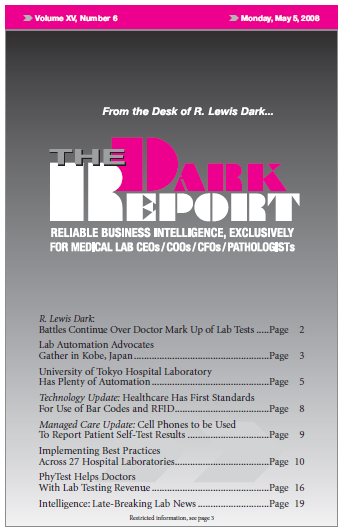CEO SUMMARY: It is always challenging to ensure consistency and high productivity across the different labs in a consolidated lab organization. To help staff focus on quality and efficiency, Alverno Clinical Laboratories LLC uses Lean methods to improve quality and timely delivery of lab results in its regional core laboratory and the labs in the …
Implementing Best Practices Across 27 Hospital Labs Read More »
To access this post, you must purchase The Dark Report.


